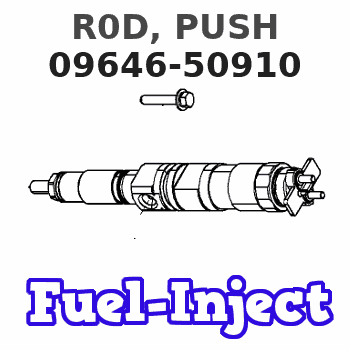Information r0d, push

Rating:
Include in #3:
Cross reference number
| Part num | Firm num | Firm | Name |
| 09646-50910 | 22321-5529 | R0D, PUSH | |
| 22321-55290 | TOYOTA | R0D, PUSH |
Information:
Coolant Leaks At The Overflow Tube
Defective Pressure Cap ... Check the sealing surfaces of the pressure cap and the radiator to be sure the cap is sealing correctly. Check the opening pressure and sealing ability of the pressure cap with a cooling system pressurizing pump.Engine Runs Too Hot ... If coolant temperature is too high, pressure will be high enough to lift the cap off of the sealing surface in the radiator and cause coolant loss through the overflow tube. See "Above Normal Heating" in COOLING SYSTEM chart.Expansion Tank Too Small or Installed Wrong ... The expansion tank can be either a part of the radiator or it can be installed separately from the radiator. The expansion tank must be large enough to hold the expansion of the coolant as it gets warm or has sudden changes in pressure. Make sure the expansion tank is installed correctly and is according to the recommendations of the truck manufacturer.Cylinder Head Gasket Leakage, or Crack(s) in Cylinder Head or Cylinder Block ... Remove the radiator cap and with the engine running look for air bubbles in the coolant. Bubbles in the coolant are a sign of probable leakage at the head gasket. With the engine not running, check each cylinder with the cylinder leakage tester. If you see air bubbles in the coolant during this test, there is a leak of combustion gas into the cooling system. Remove the cylinder heads from the engine. Check cylinder heads, cylinder walls and head gasket surface of cylinder block for cracks. When installing heads, use new head gaskets. *Inside Leakage
Cylinder Head Gasket Leakage ... If the cylinder head gasket leaks between a water passage and an opening into the crankcase, coolant will get into the crankcase.Crack(s) in Cylinder Head ... Crack(s) in the upper surface of the cylinder head or an area between a water passage and an opening into the crankcase can allow coolant to get into the crankcase.Crack(s) in Cylinder Block ... Crack(s) in the cylinder block between a water passage and the crankcase will let coolant get into the crankcase.*Authorized dealers are equipped with the necessary tools and personnel familiar with disassembly and assembly procedures to perform these services.
Defective Pressure Cap ... Check the sealing surfaces of the pressure cap and the radiator to be sure the cap is sealing correctly. Check the opening pressure and sealing ability of the pressure cap with a cooling system pressurizing pump.Engine Runs Too Hot ... If coolant temperature is too high, pressure will be high enough to lift the cap off of the sealing surface in the radiator and cause coolant loss through the overflow tube. See "Above Normal Heating" in COOLING SYSTEM chart.Expansion Tank Too Small or Installed Wrong ... The expansion tank can be either a part of the radiator or it can be installed separately from the radiator. The expansion tank must be large enough to hold the expansion of the coolant as it gets warm or has sudden changes in pressure. Make sure the expansion tank is installed correctly and is according to the recommendations of the truck manufacturer.Cylinder Head Gasket Leakage, or Crack(s) in Cylinder Head or Cylinder Block ... Remove the radiator cap and with the engine running look for air bubbles in the coolant. Bubbles in the coolant are a sign of probable leakage at the head gasket. With the engine not running, check each cylinder with the cylinder leakage tester. If you see air bubbles in the coolant during this test, there is a leak of combustion gas into the cooling system. Remove the cylinder heads from the engine. Check cylinder heads, cylinder walls and head gasket surface of cylinder block for cracks. When installing heads, use new head gaskets. *Inside Leakage
Cylinder Head Gasket Leakage ... If the cylinder head gasket leaks between a water passage and an opening into the crankcase, coolant will get into the crankcase.Crack(s) in Cylinder Head ... Crack(s) in the upper surface of the cylinder head or an area between a water passage and an opening into the crankcase can allow coolant to get into the crankcase.Crack(s) in Cylinder Block ... Crack(s) in the cylinder block between a water passage and the crankcase will let coolant get into the crankcase.*Authorized dealers are equipped with the necessary tools and personnel familiar with disassembly and assembly procedures to perform these services.
